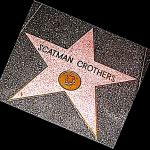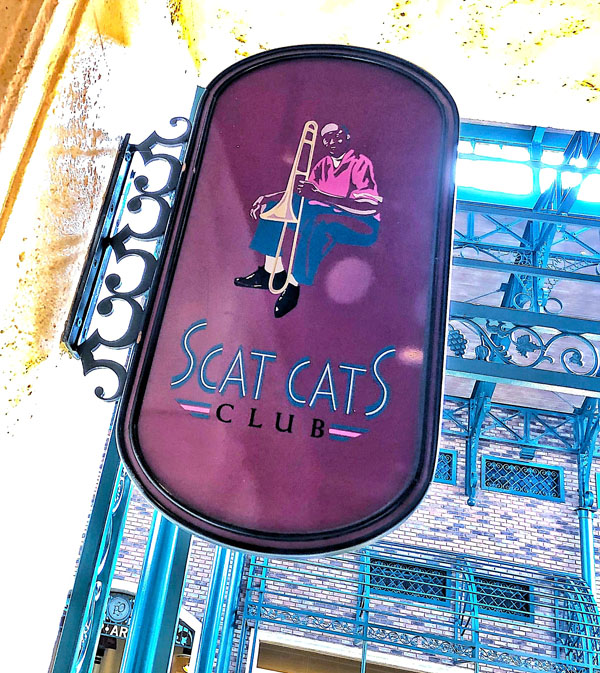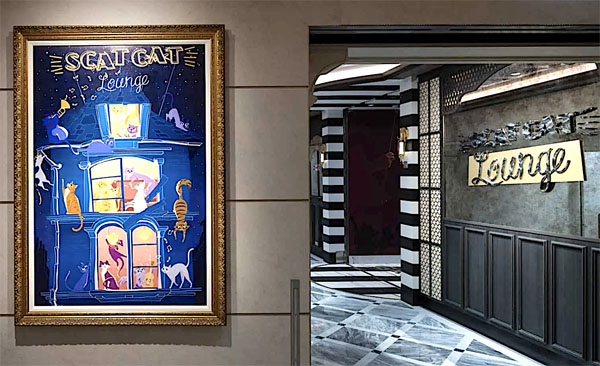


 There was no mistaking the sound of Scatman Crothers’ distinctive voice, as low and throaty as it could be sweet and sharp. Born in 1910 in Terre Haute, Indiana, he started his show business career at age 15, playing drums and guitar at age 15 in mob-ridden speakeasy clubs in the 1920s and ‘30s (among the patrons was Al Capone).
There was no mistaking the sound of Scatman Crothers’ distinctive voice, as low and throaty as it could be sweet and sharp. Born in 1910 in Terre Haute, Indiana, he started his show business career at age 15, playing drums and guitar at age 15 in mob-ridden speakeasy clubs in the 1920s and ‘30s (among the patrons was Al Capone).
Soon, he formed his own band, and life on the road was rigorous and often dangerous, as they were not always welcome in the towns where they entertained on stage. Frequently, Scatman had to scrape up enough money for his musicians to eat, cooking in his rented room instead of eating in a restaurant.
Helen Crothers, his wife of 49 years and co-author (with James Haskins) of Scatman: An Authorized Biography settled in Los Angeles with her husband, but funds were always tight, despite a demanding touring schedule that eventually led him to the Apollo in New York. He broke into films in 1953, with Meet Me at the Fair, a Dan Dailey musical in which he was at the top of the supporting cast credits.
Among Scatman’s highest profile projects were Sanford and Son, The Shining, and Twilight Zone: The Movie (in the “Kick the Can” remake), and a recurring role on Chico and the Man. He recorded several discs for Capitol. His many compositions include “Dearest One”. For the budget label Tops, he recorded the LP, I Wanna Rock ‘n Roll, a copy of which was in the collection of a young Steve Martin.
In 1952, Crothers appeared in a musical theatrical short called The Return of Gilbert and Sullivan. He teamed with dancer Marie Bryant for a jazz version of “When the Foeman Bares His Steel” from The Pirates of Penzance.
In animation, Scatman was the first African American to voice a TV cartoon character in a television cartoon episode (“The Wildman of Wildville” on Bob Clampett’s Beany and Cecil (1962). He was also the first to voice an ensemble lead in an animated series as Meadowlark Lemon in Hanna-Barbera’s The Harlem Globetrotters (1971) and the first to voice a solo lead in H-B’s Hong Kong Phooey (1974). In 1966, when Sammy Davis, Jr. became the first African American actor to voice the Cheshire Cat in an animated adaptation (and perhaps any filmed version) of Alice in Wonderland 1966, Crothers provided the voice for the company’s HBR label. He recorded two versions, one for the LP and another for the single release, which uses the Marty Paich arrangements heard in the TV special.
The Alice album initiated a long-running association with Hanna and Barbera, who cast him in the cartoon series mentioned above, hits like Smurfs, Scooby-Doo, The Funtastic World of Hanna-Barbera umbrella series, and curious projects like Joke Book and Rock Odyssey.
 Coincidentally, one of Crothers’ best friends was Jack Nicholson, with whom he appeared in four films (The Shining, One Flew Over the Cuckoo’s Nest, The King of Marvin Gardens, and The Fortune). When Bill Hanna and Joe Barbera were working at the MGM Animation Studio, Nicholson was a young aspiring actor who wheeled in the coffee break cart. Surely Bill, Joe, and Scatman had great stories to share.
Coincidentally, one of Crothers’ best friends was Jack Nicholson, with whom he appeared in four films (The Shining, One Flew Over the Cuckoo’s Nest, The King of Marvin Gardens, and The Fortune). When Bill Hanna and Joe Barbera were working at the MGM Animation Studio, Nicholson was a young aspiring actor who wheeled in the coffee break cart. Surely Bill, Joe, and Scatman had great stories to share.
When ill health made it impossible for Louis Armstrong to voice the leader of the jazz cats for Disney’s The Aristocats (1970), Scatman Crothers stepped in, and the character was dubbed “Scat Cat.” During the vinyl era, it was not possible for Disneyland Records to release an Aristocats soundtrack album in the U.S. (the CD soundtrack came decades later, more about this in another Animation Spin). Instead, two studio versions were produced, one with Phil Harris singing “Ev’rybody Wants to Be a Cat” for LPs, and another featuring Crothers on a Buena Vista single. Nine years later, he voiced a similar role in the Don Bluth featurette, Banjo and the Woodpile Cat.
 Growing up in the sixties, I became a lifelong fan of Scatman Crothers and his take on the Cheshire Cat. Two of my favorite records to this day are Hanna-Barbera’s The New Alice in Wonderland studio cast album and Disneyland’s Camarata/Darlene Gillespie version of Alice. The H-B and Disney animated Alice films were hard to access during this period (and it would be years before I owned the RCA record with another Top Cheshire Cat, Sterling Holloway). Scatman was my top-of-mind Cheshire Cat, and it was fantastic to see him earn wider recognition as his voice acting and onscreen career blossomed in the seventies and eighties.
Growing up in the sixties, I became a lifelong fan of Scatman Crothers and his take on the Cheshire Cat. Two of my favorite records to this day are Hanna-Barbera’s The New Alice in Wonderland studio cast album and Disneyland’s Camarata/Darlene Gillespie version of Alice. The H-B and Disney animated Alice films were hard to access during this period (and it would be years before I owned the RCA record with another Top Cheshire Cat, Sterling Holloway). Scatman was my top-of-mind Cheshire Cat, and it was fantastic to see him earn wider recognition as his voice acting and onscreen career blossomed in the seventies and eighties.
One of my most gratifying experiences at Disney was a role in the original, pre-construction theming of the Walt Disney World hotel, Disney’s Port Orleans Resort on the French Quarter side. (It is detailed in this article.)
With my wife Suzanne’s help, as she grew up in New Orleans, I provided names (nomenclature) and backstories for various locations throughout the resort, including an Aristocats storyline. One of the concepts was Scat Cat’s Club, an affectionate nod to a wonderful character.

Scat Cat’s Club in Port Orleans
In 2024, Disney Cruise Line launched the ship Disney Treasure. Among its amenities is Scat Cat’s Lounge, with an even more elaborate Aristocats design. Cool!

“Scat Cats Lounge” on the Disney Treasure
“What’s a Nice Kid Like You Doing in a Place Like This?”
Much as I love Sammy Davis Jr.’s version, Scatman’s performance of the song for the HBR cast album is a special part of my life, and perhaps to many of you as well.
[NOTE: Christopher Lehman will expertly detail the Ralph Bakshi animated feature that included Crothers in the cast – Monday, here on Cartoon Research.]